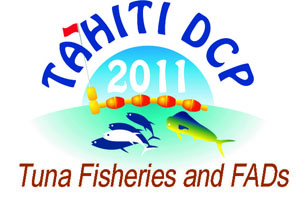Coastal FAD development in Samoa
2 : Samoa Fisheries Division
* : Corresponding author
Samoa -
Samoa
The offshore FAD program was first introduced in Samoa in the early seventies targeting pelagic species mainly tuna. The tuna industry has since developed successfully with many fishermen now familiar with FAD fishing. In the fiscal year 2007-2008, the estimated catch of albacore tuna ( Thunnus alalunga ) was 3.704 metric tons. Those results helped to promote coastal FADs in communities with established fish reserves under the Samoa Community Based Fisheries Management Program (CBFMP). The coastal FAD program started in 2009. Its primary objectives are to reduce fishing pressure on reefs and lagoons, provide canoe fishermen with alternatives, increase food security and livelihoods of local communities and strengthen management of fish reserves. In August 2009, six near-shore FADs were deployed: two bamboo surface FADs at Savaii island and four sub-surface, Okinawa-type FADs at Upolu island. These devices were anchored at about 60 – 150 meters from the barrier reef. The two surface FADs were reported missing in February 2010 and were replaced, in April 2011, with two sub-surface FADs. Coastal FADs need to be cheap to construct and deploy, durable enough to withstand adverse sea conditions, and vandalism-proof. Canoe fishermen should be able to easily locate the FADs using land marks. Community awareness workshops were conducted to facilitate sustainable management of the program and introduce FAD fishing technology, sea safety and data collection. The coastal FAD program in Samoa is still at an early stage therefore the Fisheries Division will continue to work closely with communities to monitor the coastal FADs and their socio-economic and biological impacts.

 PDF version
PDF version
